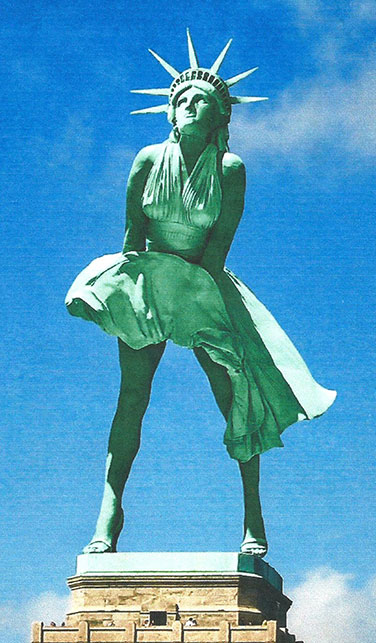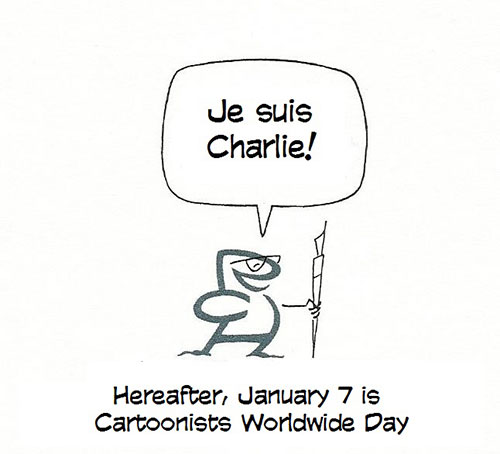 |
|||||||||||
Opus 407 (September 17, 220): A selection of August’s editorial cartoons in a month that includes both parties’ nominating conventions, several instances of editoons provoking outcry, some yardage of sheer exasperated outrage about the Trumpet, and the winners of the National Cartoonist Society’s awards, including Cartoonist of the Year. Here’s what’s here, by department, in order (the longest entries are marked with an asterisk*)—:
Before We Start Rancid Raves Errs Fitnaught Woodward Fitnoot
NOUS R US *NCS Announces Winners More Trumpery Melania’s Nazi Uniform
ODDS & ADDENDA Kamala Harris for the People
EDITOONS CREATE UPROAR AND OUTCRY Yes, Editorial Cartoons Can Make People Angry: Pat Bagley Cartoon Sparks: Mike Luckovich Eliminated Forever Conservatives Not Immune: Michael Ramirez Editoonist Fights Back: David Fitzsimmons
OVERSEAS Jordanian Cartoonist Arrested Charlie Hebdo Trial Starts in Paris
TRUMPERIES Antics and Idiocies of Our Bloviating Buffoon-in-Chief
THE TRUMPET AND WHITE SUPREMACISTS
**EDITOONERY The Mock in Democracy —with Gag Cartoons Interwoven for Breaks
ONWARD, THE SPREADING PUNDITRY Politics, No Pictures
*FACT-CHECKING THE TRUMPET
QUOTE OF THE MONTH If Not of A Lifetime “Goddamn it, you’ve got to be kind.”—Kurt Vonnegut Our Motto: It takes all kinds. Live and let live. Wear glasses if you need ’em.
But it’s hard to live by this axiom in the Age of Tea Baggers, so we’ve added another motto: Seven days without comics makes one weak. (You can’t have too many mottos.)
And in the same spirit, here’s—: Chatter matters, so let’s keep talking about comics. AND—
“If we can imagine a better world, then we can make a better world.”
And our customary reminder: don’t forget to activate the “Bathroom Button” by clicking on the “print friendly version” so you can print off a copy of just this installment for reading later, at your leisure while enthroned. Without further adieu, then, here we go—:
BEFORE WE START, THERE’S THIS (WORTH REPEATING)—: It was John Adams who declared that “the government of the United States has been emphatically termed a government of laws, and not of men.” What, exactly, does that mean? How does a government of laws function that makes it different from a government by men? A government by men exists as long as there are men powerful enough to boss everyone else around. A government of laws functions like a game. It works as long as everyone plays by the rules, the laws. When people stop playing by those rules, that game, like any other game, deteriorates and soon ceases to be. Unhappily, we have a situation today of some people not playing by the rules. Remember when Trump ordered that no one in the White House staff or in the State Department testify before the House committees that have subpoenaed them. Those who obey this order are not playing by the rules. If you’re subpoenaed, you must show up. That’s the rule, the law. People who disobey that law are undermining American democracy, a government by laws. If you don’t play the game by its rules, the game is pretty quickly over. In a recent Time, we read something in the same vein: “Democracy, after all, is not unlike flying in Peter Pan’s world: if you stop believing in it, it ceases to work.” (Haley Sweetland Edwards and Abby Vesoulis) Evidently, most of us know that.
... And Then This—: RANCID RAVES ERRS Last
time (Opus 406), we posted a photo of the Vietnam Veterans Memorial in
Washington, D.C.—that black wall with the names of dead soldiers on it?—that
had been, seemingly, defaced with colorful graffiti. And we said how shameful
it was that a remembrance of the dead should be defaced. We’re posting the
photo again near here. Well, you can’t tell, but my face is red. Turns out the photo wasn’t of the Vietnam Memorial in Washington, D.C. The photo was taken in May 2016 and shows a vandalized Vietnam War Memorial in Venice, Calif. May 2016. Four years ago. It is not related to recent demonstrations over the death of George Floyd. Except that the Venice photo was posted on Facebook recently by some Right Wing-Nut who wants everyone to make the mistake I just made. Some Black Lives Matter protesters have spray-painted war memorials around Washington, D.C. But as of now, the Vietnam Veterans Memorial has not been vandalized. "I have had no reports of it being vandalized," said Sgt. Eduardo Delgado, a public information officer for the National Park Service, in an email. "I saw it this morning and it was fine."
... And This—: FITNAUGHT on Faking Sorry:
can’t resist the bad pun. I’ve been waiting for the opportunity for several
days. Onward. We had just posted the Hindsight on Fay King when
the postman brought me a copy of Battling Nelson’s 1911 book, The Wonders of
Yellowstone Park, which I’d mentioned in the essay. One of the
illustrations that accompanied the essay was a King drawing caricaturing both
Nelson and King, she facing him with a sketchpad in her hand. My sources for the picture claimed it was the frontispiece in the book and/or that it was among the illustrations King supplied for the book. That’s a little iffy. Was the frontispiece the only illustration in the book? Or were there others? So I steered around in the direction of imprecision, saying only that it was “an illustration” in the tome. Not “the” illustration (which it might’ve been if she’d drawn only the frontispiece). And not “one of the illustrations” in the book (which it would’ve been had there been others). Hence, faking. I was, in a manner of speaking, faking the extent of my scholarship. Now that I have the book itself, I can correct that dodge. Now, I can assure you that (a) the picture is the frontispiece and (b) it is one of 21 illustrations King provided. Nelson says he wrote the book while staying at the fabled Old Faithful Inn at the Park, which had been founded as a national park, the nation’s first (the world’s first!), March 1, 1871. His writing style is uninhibited and unabashed. Without style, in fact. And he could have used an editor. In one place, he says something is “magnificient”; in another, he spells it correctly. The book was printed in Hegewisch, Illinois—probably by Nelson himself. In his Preface, he describes himself in the third person as “the only real unique lightweight champion the world ever had. ... He is a self-made man, self-educated and fought his way from a very, very poor boy, unassisted, up to the pinnacle of success in the prize ring. “Having participated in over 100 ring battles—real ones. He has never been knocked out or mixed up in a solitary one that had the finger of suspicion attached to it.” The Yellowstone book is his second! He also wrote The Life, Battles and Career of Battling Nelson, which, he assures us, “is really a very interesting book. It tells of the hardships a man has to overcome to become a real champion.” Of the three pages in the Preface to Yellowstone, only one is devoted to the author. The rest, he devotes to Fay King, “a very dear friend of Bat’s [still in the third person]. ... She has talent, ambition and a strong heart which is bound to win out sooner or later. ... Such wonderful artists as Tad ... and one of the highest salaried artists in the world, Homer Davenport, have commented very favorably on her work, which speaks heaps of praise for her talent. ... “The artist is but a mite of a girl, standing only five feet tall, weighing 123 pounds—fully clothed. ... black hair and brown eyes, in all she is a stunning little brunette.” Turn-about being fair play, King includes a picture of Nelson in virtually every Yellowstone scene she draws. From such affectionate descriptions—visual and verbal—we may conclude (rightly, I suppose—particularly given their subsequent marriage) that the relationship between the two is cordial bordering on romantic. Nelson also supplies the missing information in King’s early career. Between graduation from Seattle University and her arrival at the Denver Post—a blank spot in the narrative until now—King was “doing ‘Special Cartoons’ and interviews for a theatrical paper in Portland,” her home town. For graphic evidence of Fay King’s regard for Nelson, we have a selection of her drawings from the book.
... And, yes, this—: A WOODWARD FITNOOT In our Bunny Bonus a week or so ago, we asked some questions in connection with Trump’s alleged failure to respond adequately to the coronavirus. Okay, he didn’t do anything like enough; he was largely silent, not wanting to “cause a panic,” he said. But where were the experts? Why did none of the infectious diseases scientists speak out and correct Trump when he said it was nothing to worry about? Someone tried and was silenced. That’s it? One scientist and it’s over? Where were the rest of them? Where was their highly touted scientific curiosity? And where was Woodward? He knew that Trump knew he was wrong. Had Woodward spoken out as soon as he learned of Trump’s intentional deception—reportedly in his February 7 interview—he might’ve saved 30,000 to 40,000 lives, according to the calculations being advanced about Trump’s failure to properly respond. But in all the fuss and feathers about Trump’s dereliction of duty we heard nothing about Woodward’s. In interviews over the following weeks, Woodward excused himself from culpability. In the early weeks of last winter, he said, no one was certain about whether the virus in China would threaten the U.S. and the rest of the world. As far as Woodward was concerned in those early weeks, Trump might have been right to stay mostly silent. Okay, but that doesn’t entirely excuse him—or the rest of the news media. In its delight in reporting this fresh Trump travesty, the news media overlooked an even greater story. In focusing on Trump’s dishonesty, no one sees the other derelictions. We’ve neglected to ask the other, obvious, questions that I asked just above. The news media need to back off a little and realize that they are as culpable as Trump. They didn’t pursue the story. (If it had been about Trump raping someone, they’d surely have dug in deep.) They didn’t pester scientists for clarifications. And neither did Woodward. Who, lest we forget, is an editor at the Washington Post.
READ & RELISH Brevity is the soul of lingerie.—Dorothy Parker
And Now—: NOUS R US Some of All the News That Gives Us Fits
NCS ANNOUNCES WINNERS The National Cartoonists Society, originally scheduled to meet for the 74th annual convention, this time in Kansas City, met instead virtually, on the Web, all day Saturday, September 12. While this maneuver lacked the cocktail parties and fellowship and good cheer of the traditional in-person gathering, it permitted the Society to present its traditional awards—at the top of the list, the Reuben for Cartoonist of the Year, which, for 2019, went to Lynda Barry, the somewhat eccentric (in a good way) cartoonist, whose most memorable work was the weekly strip Ernie Pook’s Comeek, which appeared in alternate weekly newspapers. The other nominees were: Libenson, Pajama Diaries; Mark Tatulli, two strips, Lio and Heart of the City; Raina Talgemeier, graphic novels and an autobiographical web comic, Smile; and Hilary B. Price, whose comic strip Rhymes with Orange has won the Silver Reuben (Division Award) for Best Newspaper Panel Cartoon four times, in 2007 and 2009, 2012 and 2014. She has also been nominated for the Reuben—oh, maybe ten times? The credentials of the nominees are crumbling away as time passes. Libenson quit Pajama Diaries last year in order to concentrate on books. Tatulli gave up Heart of the City several months ago to Christina “Steenz” Steward, one of the few female African-American cartoonists on the mainstream funny pages, who draws in a manner wholly unlike the way Tatulli drew the strip. A sort of manga derivative. And Price no longer does the daily Rhymes; she’s farmed that out to Rina Piccolo, who did Tina’s Groove (about a waitress in a diner) for several years (and may still be doing it; dunno). It is worth noting that after years of NCS’s overlooking women cartoonists altogether—effectively sidelining them— this year all but one of the Reuben nominees is a woman. And at least one of nominees is not a syndicated cartoonist, signaling an additional opening of the ranks. Barry has published several books, the most recent in 2008, What It Is, is a graphic novel that is part memoir, part collage and part workbook, in which Barry instructs her readers in methods to open up their own creativity; it won the comics industry's 2009 Eisner Award for Best Reality-Based Work. In recognition of her contributions to the comic art form, Comics Alliance listed Barry as one of twelve women cartoonists deserving of lifetime achievement recognition, and she received the Wisconsin Visual Art Lifetime Achievement Award in 2013. In July 2016, she was inducted into the Eisner Hall of Fame. She was honored in 2017 at the 71st annual Reuben Awards when she received the National Cartoonists Society’s Milton Caniff Lifetime Achievement Award, a prestigious honor that requires a unanimous vote from the Society’s Board of Directors. Barry
was awarded a MacArthur Fellowship as part of the Class of 2019. She is
currently an Associate Professor of Interdisciplinary Creativity at the
University of Wisconsin–Madison. In 2020 her work was included in the exhibit Women
in Comics: Looking Forward, Looking Back at the Society of Illustrators in
New York City. In accepting the Reuben, Barry said: “One of the things that’s so beautiful about comics is that whatever may be missing from your world, you might be able to find it in comics.” And in thanking her students, she remarked, “The other beautiful thing about comics is they’re really opening up to other people and other worlds that people bring with them.” Barry also cited The Family Circus creator Bil Keane as a direct influence on her as a cartoonist and as a human being because, as she put it, “the world of The Family Circus loved me and welcomed me, and there was something about love in that comic that really stuck with me.” NCS President Jason Chatfield commented, “We’re so thrilled to be able to honor Lynda and her work in this way. She is a treasure, and we’re lucky to be able to enjoy her wit, wisdom and artistic talent. She is a great light in dark times.”
THE OTHER AWARDS given during the first virtual Reuben Weekend were the “Division” Awards for cartooning achievement in various of the medium’s manifestations. Sometimes called the “Silver Reubens,” here are the Division Awards for 2019 (nominees are listed, too, because even being nominated is a distiction; the winner in each Division is indicated with an asterisk in front of the *name):
Editorial Cartoons *Pat Bagley, Sean Delonas, Michael Ramirez
Magazine/Newspaper Illustration Jason Chatfield, Peter Kuper, *Tom Richmond, Dave Whammond
Feature Animation Szymon Biernacki and Marcin Jakubowski, Chris Butler, *Nelson Lowry, Santiago Montiel and Trevor Dalmer
Television Animation Cecilia Aranovich, Paul Rudish and Eddie Trigueros, *Genndy Tartakovsky
Newspaper Panel Cartoons *Dave Blazek, Loose Parts; Mark Parisi, Off the Mark; Wayno, Bizarro
Gag Cartoons Tyson Cole, *Amy Hwang, Tom Toro
Advertising/Product Illustration Kyle Lambert, *Luke McGarry, Johnny Sampson
Comic Books Gideon Kendall, Megaghost; *Stan Sakai, Usagi Yojimbo; Matt Smith, Folklords #1
Graphic Novels *Harmon Becker, They Called Us Enemy; Marek Bennett, Civil War Diary of Freeman Colby, Vol.2; Colleen Doran, Snow, Glass Apples
Online Comics, Long Form Steve Conley, The Middle Age; Maaria Laurinen, Phantomland; *Alec Longstreth, Isle of Elsi Online Comics, Short Form *Jim Benton Christopher Grady, Emma Hunsinger
Book Illustration Keith Bendis, The Devil’s Dictionary; *Stacy Curtis, Karate Kakapo; Lincoln Peirce, Max and the Midknights
Newspaper Comic Strips *Bran Crane, Pickles; Paul Gilligan, Pooch Café; Jeff Parker and Steve Kelley, Dustin
Variety Entertainment Luke McGarry, Kidtown; Laurie Triefelt, World of Wonder; *Joe Wos, Mazetoons
Greeting Cards Susan Camilleri Konar, *Scott Nickel, Rick Stromoski
Online Animation *Joe Bluhm, Pinocchio, A Modern Retelling; Nathan Mazur, Pancake Rocking; Bill Plympton, Trump Bites/Russian Roulette
MORE TRUMPERY From The Week, August 7. The Trumpet directed the U.S. Ambassador to Britain to ask the British government to steer the British Open to Trump’s Turnberry golf resort in Scotland, which would have pumped millions into the financially ailing resort. Since he took office, Trump has pumped millions of taxpayer dollars into his properties on hundreds of presidential visits to his resorts, where Secret Service agents have paid as much as $650 a night for rooms. And that doesn’t even consider the millions spent at Trump properties by foreign governments and special interest groups looking to curry favor with the president. And there’s likely lots more corruption of this sort that we don’t even know about. If Trump is defeated in November, America needs a thorough accounting. Without a full understanding of the damage Trump’s lawlessness and corruption has wrought throughout government, we simply cannot move forward as a society or a political system.
MELANIA’S NAZI UNIFORM A few never-Trumpers (the fanatics, of course—not me, never me) decided to discredit Mrs. Trump’s notable speech (the most restrained and humane of the Republicon Convention) by drawing attention to the rather severely masculine attire that she effected for her speech—a dark brown button-up-to-the-neck suit. They said it looked like a Nazi uniform. Well, maybe. And maybe she deliberately picked a costume that reminded us of her husband’s fascist attitudes and actions as a way of undercutting the praise that she lavished on him in her speech. Perhaps she’s a satirist of great subtlety. Remember that “I don’t give a damn” coat of hers. Possible. But I think otherwise. As a former model (sometimes naked in those scandalous photos that have been circulating for years on the Web) and a beautiful sexy woman, she probably wanted to wear something that didn’t draw attention to her sex or beauty. Trump’s daughter Ivanka went the other way: she wore a black dress that featured her naked shoulders. Melania didn’t want even that much hint of her sexuality. So she chose a completely sexless suit. No bare arms or shoulders. And it reminded the sharper-tongued among us of classic Nazi uniforms. You can’t win if you’re the Trumpet’s wife, particularly if you’re good-looking. Sigh.
ODDS & ADDENDA Kamala Harris made a remark that made me like her more (and I already liked her a lot). When she was a prosecutor, at every beginning of a trial, she always introduced herself to the court: “Kamala Harris, for the people.” That’s good: for the people.
Fascinating Footnit. Much of the news retailed in the foregoing segment is culled from articles indexed at https://www.facebook.com/comicsresearchbibliography/, and eventually compiled into the Comics Research Bibliography, by Michael Rhode, who covers comic books, comic strips, animation, caricature, cartoons, bandes dessinees and related topics. It also provides links to numerous other sites that delve deeply into cartooning topics. For even more comics news, consult these three other sites: Mark Evanier’s povonline.com, Alan Gardner’s DailyCartoonist.com (now operated without Gardner by AndrewsMcMeel, D.D. Degg, editor); and Michael Cavna at voices.washingtonpost.com./comic-riffs . For delving into the history of our beloved medium, you can’t go wrong by visiting Allan Holtz’s strippersguide.blogspot.com, where Allan regularly posts rare findings from his forays into the vast reaches of newspaper microfilm files hither and yon.
FURTHER ADO A friend of mine tells this story—: I know I shouldn’t have done this, but I am 83 years old, and I was in the McDonald’s drive-through this morning, and the young lady behind me leaned on her horn and started mouthing something because I was taking too long to place my order. So when I got to the first window I paid for her order along with my own. The cashier must have told her what I'd done because as we moved up, she leaned out her window and waved to me and mouthed "Thank you," obviously embarrassed that I had repaid her rudeness with kindness. When I got to the second window I showed both receipts and took her food too. Now she has to go back to the end of the queue and start all over again, Don't blow your horn at old people; they have been around a long time.
EDITOONS CREATE UPROAR AND OUTCRY —And Lots of People Running Around with Their Hair On Fire
YES, EDITORIAL CARTOONS CAN MAKE PEOPLE ANGRY And Maybe Provoke Thought and/or Censorship An
editoon published early in September by the Salt Lake Tribune’s Pat
Bagley has raised the ire of law enforcement and several pro-law
enforcement groups who demanded an apology. The Utah Sheriff's Association has
issued a rebuke of Bagley for his "The Deep Hate" cartoon which they
say is aimed at law enforcement, reported Pat Reavy at deseret.com. The cartoon also prompted U.S. Representative Chris Stewart, R-Utah, to tweet disapproval: “This is extremely dangerous & inappropriate and only fans the flames of hatred & mistrust. I stand with the Utah Sheriffs Association. The @sltrib & @Patbagley should immediately retract & apologize.” Bagley replied to Stewart’s tweet with: “Know what’s dangerous? Police with no accountability and a rep who misinterprets cartoon to rile people up. Cop in cartoon is in for a check up —he felt something was wrong. White supremacists make it a point to infiltrate law enforcement. That’s a fact. That’s a problem.” When pressed whether Bagley’s cartoon was meant to prompt discussion about the issue, Stewart said it crossed the line: “There’s all sorts of ways you can provoke a conversation without this broad sweeping brush that is, as I said, either uninformed or dishonest.” The Tribune did not plan to apologize, said George Pyle, the editorial page editor. Neither did Bagley. And the cartoon remained online. Pyle said in a statement that the cartoon does not imply that every police officer is a white supremacist, but that racism in law enforcement is an issue. “The nature of a political cartoon is to raise important issues that should be faced, sometimes in a blunt way,” he said. “One of the most important issues facing our nation today is the fact that some elements of our nation’s law enforcement community, and those of other nations, have been infiltrated by white supremacists.” Pyle said further that the officer in the cartoon “has rightly gone for a checkup because he felt that something was wrong. He is clearly not pleased with what he is seeing in the X-ray and, having seen it, may well resolve to take appropriate action. At least we can hope.” On Facebook, several pro-law enforcement groups planned a “back the blue” protest in front of the Tribune’s office. Bagley has been with the Tribune since 1979, and he is something of a regional hero—a fixture, an institution. At the recent meeting of the National Cartoonists Society, he won a Silver Reuben for best editorial cartoonist of the year.
And Bagley’s Not Alone—: CARTOON SPARKS “UNCOMFORTABLE CONVERSATION Idaho’s Lewiston Tribune provoked a firestorm of criticism recently when it
published an Atlanta Journal-Constitution political cartoon by Pulitzer
Prize winning Mike Luckovich that depicted a pair of students — one Black and
one white — hiding underneath classroom desks next to a chalkboard that read
“Active Shooter Drill,” with the Black student saying “This feels like
preparing for a cop to show up.” “Emails, phone calls and more than four dozen subscription cancellations lit up our front office,” wrote the paper’s Nathan Alford. “The consensus: It would seem that the Tribune doesn’t support local law enforcement. The cartoon was also a put-down on our teachers who lead our kids — including three of my own — in regular active shooting drills in our schools. Not to mention the first responders. “In summary,” Alford concluded, adopting the voice of an irate reader“—what you’ve done, Tribune, is disgusting. It’s disgraceful, and wrong, and you should be ashamed.” Then Alford added: We broke a sacred trust. Regardless of the intent of Luckovich’s cartoon about a significant national news event and ongoing public debate about law enforcement methods in our country, many readers interpreted the cartoon as the Tribune’s direct slap in the face of local law enforcement. “That was our judgment error,” said Alford, “ — the national commentary was read by many as local.” Alford visited with nearly every police chief, sheriff and a handful of officers on the day after the cartoon appeared. “My message,” he said: “We regret Wednesday’s Opinion page cartoon. We made a judgment error and failed to anticipate the impact the cartoon would have locally, and the negative reaction it would elicit.” He remembered an editorial published just after the shooting of Nez Perce Tribal Officer Josh Rigney in April l2019. Titled, “For a cop, there is no off-duty sanctuary,” it conveyed the Tribune’s genuine respect for the burdens borne by those in law enforcement — and those who love them. “Facing down the threat of harm or death goes with being a cop,” it read. “Most of us assume, however, that the hazards disappear as he crosses the threshold of his home. Ask any officer and he’ll tell you otherwise. He is acutely aware of being in harm’s way, even within the walls of his own sanctuary, exposing not only himself to danger but possibly his family as well.” The paper’s apology for printing the cartoon was general—to subscribers, police, everyone. Said Alford: “And let’s not overlook the underlying premise of the cartoon: Black people in many parts of our country are fearful of the police, and for those of us who didn’t live through the civil rights movement of the 1960s, this is the most widespread division we’ve ever experienced in the country we all love. “That’s real,” Alford said, adding: “Standing up for ‘liberty and justice for all’ requires hard work and resolve from us all, and if there are local improvements to be made, this newspaper will help our law-enforcement leaders toward that end. I made that promise to every police chief, officer and sheriff I’ve spoken with.” Alford concluded with a plea: “Let’s work to find more common ground, and together we will improve the cities, counties and towns we call home. Let’s do this together, please.”
The Same Cartoon Provoked a Much More Drastic Measure Elsewhere—: EDITOONS ELIMINATED FOREVER AFTER READER OUTRAGE At the Laconia Daily Sun in New Hampshire, Mike Luckovich’s Shooter Drill cartoon persuaded the editors to re-think the function of political cartoons in their newspaper. We quote from their editorial verbatim—: The point the cartoonist seemed to be trying to make – that Black children may have a very different perception of police than their white classmates – was lost on the scores of readers who expressed their anger in calls, emails and social media posts [objecting to racism in the cartoon]. ... Many readers also let us know that they felt the cartoon could send the wrong message – that kids can’t trust police when they need help. It troubles us that anyone would take it that way, because every police officer we’ve ever encountered has a deep soft spot in their heart for kids – every kid. We want children to know that police officers are always there to help, and apologize if the cartoon sent a message that ran counter to that. We’ve received complaints about cartoons before, though not to this extent, and the public’s response to this one has rekindled a conversation that has been going at the Daily Sun for more than a year: the value of running such cartoons at all. One reader summed up the question rather nicely when he asked, “What was positive about this cartoon?” Not everything we run will be positive, and that’s just the nature of our business. But when cartoons like this one and others serve mostly to inflame an already polarized public discourse, we conclude they have reached the point of diminishing return and no longer serve the engaging purpose they once did. We think there is value to reporting on local responses to national issues of the day – such as the local Black Lives Matter demonstration we covered back in June – and will continue to report on such issues. But we’ll use the space previously reserved for editorial cartoons for something else.
AND CONSERVATIVE EDITOONISTS ARE NOT IMMUNE When Michael Ramirez put [his] spin on Martin Luther King Jr.’s “I Have A Dream” speech, it made at least one reader angry when it was published in the Southeast Missourian in Cape Girardaeu. “Satire
is meant for humor, but they’re making light of something that’s not meant to
be made light about,” wrote in Nichole Holzum, calling the cartoon racist and
its message disparaging. “Context matters,” she went on, “the editor knew this, this was meant to pander to their audience, it seems intentional and not accidental.” The paper responded in the way most papers respond to such complaints: “Thank you for your note. The Southeast Missourian runs cartoons from a range of perspectives. Although we try to stay away from the most offensive cartoons — we do receive criticisms from all sides at different times. This particular one was created by a two-time Pulitzer Prize winning cartoonist, whose cartoons run in media outlets around the country. It is commenting on specific events, which National Public Radio among others has recently covered.”
AN EDITOONIST FIGHTS BACK By David Fitzsimmons, editoonist at the Arizona Star, who wrote this op-ed somewhat sarcastic essay when a cartoon of his became the subject of a brouhaha at a Texas school: When
George Floyd was murdered, I drew a cartoon depicting the historic roots of
American racial brutality beginning with a 17th-century white slaver, his knee
on an African man’s throat, who in the next scene became a white plantation
owner, whip in hand, with his knee on an African-American person’s throat,
repeating this knee to the neck pattern through the post-Reconstruction rise of
the Klan, through Jim Crow, up to my depiction of a Minneapolis cop with his
knee on Mr. Floyd’s throat in the year 2020, with Mr. Floyd saying, “I can’t
breathe.” I feel for the poor, well-intentioned junior high school educators in Wylie, Texas who shared my cartoon in the classroom and made the dreadful mistake of asking students to interpret the meaning of the cartoon in a lesson about the freedom of expression, democracy and the Bill of Rights. The good folks of Wylie, a very white suburb of Dallas, were so shocked by my assertion that Whites have been oppressing Blacks since before our nation’s founding that they could not catch their breath. It didn’t take long for people to call for firing the teacher and right-wing media to mischaracterize my cartoon: “School assignment compares police officer to slave owners and the KKK.” Persecuting, smearing and scape-goating public school teachers for teaching truth, civic dialogue, historical context and critical thought is beyond unacceptable. It’s un-American. The national Fraternal Order of Police Vice President Joe Gamaldi tweeted, “I cannot begin to tell you how abhorrent and disturbing this comparison is, but what is more disturbing is that no adult within your school thought better before sending this assignment to children.” And I can’t begin to tell you how abhorrent and disturbing this pattern of white cops killing Black Americans is. The school district groveled. “We are sorry for any hurt that may have been caused through a social studies lesson that included political cartoons that reflected negatively on law enforcement …” The day after I saw Gamaldi’s indignant tweet, a Wisconsin cop shot a black father seven times in the back. In front of his children. When asked about the Wylie uproar by Daryl Cagle, whose company syndicates my cartoon to news outlets across the country, I wrote: “This cartoon was my response to the cold-blooded murder of George Floyd by the Minneapolis Police officer. It diagrams the historic roots of our systemic racism. “I’m impressed the National Fraternal Order of Police is directing its fury at an illustration revealing how our present horrors are mere echoes of our cruel past. Perhaps it requires too much moral courage, or honest clear-eyed reflection, for the National Fraternal Order of Police to funnel their fury at the few racist police officers who disgrace their oath and their badges by disproportionately murdering African Americans.” Texas Governor Greg Abbott got in on it, before realizing a number of teachers were involved, stating, “A teacher in a Texas public school comparing police officers to the KKK is beyond unacceptable. It’s the opposite of what must be taught. The teacher should be fired. I’m asking the Texas Education Agency to investigate and take action.” Is anyone shocked that a cynical politician, whose huffing morality has the aroma of political opportunism, is calling for an investigation, a show trial, a tribunal, a McCarthy hearing? Abbott is so enraged, and engaged, you’d think he’d heard a Black cop had shot a white man. For years, I was a regular in schools, talking about freedom of the press. Hundreds of classrooms. Kindergarten to college commencements. Thousands. Not anymore. The oppressive chill is real. What school would risk a parental firestorm from the right? The Wylie Independent School District noted the assignment was removed, sending out this apology: “We are sorry for any hurt that may have been caused by a lesson that included political cartoons that reflected negatively on LEOs (law enforcement officers). We value them and will do better. Thanks for helping us move forward.” And what did we learn today, children? We must not criticize law enforcement. Ever. Ever! We must not teach history. And we must not question. Thanks for helping us move backward.
Overseas the Results Are Often More Severe for the Editoonist While editoonists in this country face (or dodge) outraged readers whose opinions differ from those expressed in their cartoons, cartoonists in other countries—particularly in the Mideast—face arrest, imprisonment, even death for making cartoons that their governments disapprove of. The latest instance took place in Jordan.
JORDANIAN CARTOONIST ARRESTED Cartoonist Emad Hajjaj was arrested Wednesday, August 26, in his home country of Jordan. Charged with the “cybercrime” of “insulting an Arab country,” he faces up to five years in prison for drawing an “offensive” cartoon criticizing Crown Prince Mohamed bin Zayed of the United Arab Emirates. Hajjaj was arrested five hours after posting the cartoon to his newspaper site, said Daryl Cagle, whose syndicate distributes Hajjaj’s cartoons worldwide. Cagle quotes the International Press Institute: “In recent months, press freedom in Jordan has come under threat from the government. As part of its efforts to limit the spread of Covid-19, the government declared a state of emergency in March 2020, introducing a 1992 Defense Law that gave authorities sweeping powers to impose curfews, close businesses – and gag the press. At least 13 journalists have been arrested and summoned for questioning by security forces since the pandemic began.” Hajjaj’s
cartoon depicts UAE leader, Crown Prince Muhammad bin Zayed Al Nahyan, commonly
called “MBZ,” holding an Israeli dove that has spit on his face, with the
spittle in the shape of a US F-35 fighter jet. jets. Emad’s drawing shows that Israel has embarrassed MBZ by blocking the sale after UAE agreed to the peace deal. Al-Araby, Hajjaj’s home newspaper, writes that the arrested cartoonist was referred to the “notorious State Security Court” by Amman’s Attorney General. “The SSC – whose judges are appointed by the prime minister – has jurisdiction over crimes including drugs, explosives, weapons, espionage and high treason, however it has increasingly been used to try peaceful protesters and government critics. “The country’s infamous 2015 cybercrimes law has widely criticized by rights groups, who say it is a pretext to crack down on any individual who criticizes the government. Amendments added to the law in 2018 also made the distribution of articles considered slanderous punishable with a prison sentence.” Cartoonists Rights Network International (CRNI), the Committee to Protect Journalists (CPJ) and Cartooning For Peace have posted articles on Emad’s arrest. According to the CPJ article, quoting the Center for Defending the Freedom of Journalists director, Nidal Mansour, Hajjaj was brought to the prosecutor’s office and charged with “disturbing relations with a sister country” under the country’s counter-terrorism law. If convicted, Hajjaj could face a minimum of 10 years hard labor, according to 2014 amendments to the counter-terrorism law. “The public prosecutor’s office ordered Hajjaj to be detained for 14 days and transferred him to Salt Prison, northwest of Amman.” Said Cagle, who is not only Hajjaj’s syndicator but his friend: “When it happens up close it’s unbelievable. Horrifying. Perplexing. I cannot imagine a government fearing a cartoon, fearing lines on paper, trembling before mere ink on a page, pixels, an idea, a thought. Whether it’s a Jordanian court calling for cartoonist to be imprisoned or a Texas Governor calling for a Wylie, Texas School District to fire social studies teachers the intolerance for expression is medieval.” [But it happens, man. And it shows both the power of cartooning and an attitude to attack in pring.—RCH] Then, reported Cagle, three days later, Hajjaj was freed. “His case was downgraded from terrorism and the military court to the Amman prosecutor, but he still faces trial and up to two years in prison for ‘slander and libel’ according to an article in the Times of Israel.” Human Rights Watch led calls on Jordan's authorities to release Hajjaj. [By which I think they mean to drop all charges.—RCH] "Calling a satirical cartoon a terrorism offence only confirms that Jordan intends to muzzle citizens who speak freely," said Joe Stork, deputy Middle East director at the New York-based watchdog. "This arrest sends the message that Jordanian authorities would rather abuse the rights of their own citizens than risk offending a gulf leader's feelings," he added.
And If That’s Not Enough Indication of the Danger of Editoons, There’s This Reminder—: TRIAL OVER 2015 CHARLIE HEBDO ATTACKS OPENS IN PARIS In early September, France began revisiting one of the worst chapters in its modern history as a landmark trial opened in Paris for the January 2015 terrorist attacks that killed 17 people in and around the French capital. Over
at least the next two months, reported Aurelien Breeden and Constant Meheut at
nytimes.com, before the glare of the world’s media and under tight security,
the court is expected to meticulously examine three harrowing days that
traumatized France, starting with a daytime assault on the offices of Charlie
Hebdo, the satirical magazine that Islamic extremists targeted after it
published cartoons lampooning Islam. There, the terrorists killed 12 people as
they sat in a meeting. The killings were followed by a string of deadly jihadist attacks, culminating with assaults in November that year in and around Paris that killed 130 people, vaulting France into a years long state of emergency. Saïd and Chérif Kouachi, the two brothers who carried out the Charlie Hebdo attack, died in a shootout with the police north of Paris two days later. A third attacker, Amédy Coulibaly, killed a police officer in a Parisian suburb and four Jewish hostages at a kosher supermarket before dying himself when the police stormed the building. With all the central assailants dead, the current trial will be more cathartic than revelatory for a country forced by the events to reckon with the threat of homegrown terrorism, permanently altering its balance between security and civil liberty. Those actually on trial, thirteen men and a woman, who range in age from 29 to 68, are charged with providing logistical aid to the assailants by carrying or supplying cash, weapons and vehicles. Most of the accused are facing up to 20 years in prison. “We want to fill this courtroom with what our clients went through,” Patrick Klugman, a lawyer for surviving hostages at the kosher supermarket, told reporters at the courthouse, adding that he also wanted to renew the focus on the anti-Semitic nature of the killings. Charlie Hebdo, true to character, defiantly reprinted cartoons of the Prophet Muhammad on its front page for the first day of the trial, explaining in an editorial that the drawings had “historical value” and were “pieces of evidence” that needed to be remembered. “We will never back down,” Laurent Sourisseau, Charlie Hebdo’s editorial director, wrote in a separate piece, arguing that the “hatred” from the 2015 attacks was still present. “We will never give up.” In a special edition this week, Hebdo’s director Laurent Sourisseau named all of the victims of the 2015 attack. Most of the Muhammad caricatures were first published in 2005 by the Danish newspaper Jyllands Posten, triggering widespread protests by members of the Muslim community. Charlie Hebdo republished them later that year, provoking, eventually, the January 2015 attack. Philippe Lançon, a survivor of the Charlie Hebdo massacre who wrote a gripping book-length account of the attack and its aftermath, Disturbance, wrote in that issue of the magazine that “the trial that begins is a necessary, symbolic and limited social ceremony.” “And also, for some of us, a consolation ritual,” he added.
Mohammed Moussaoui, the president of the French Council of the Muslim Faith, sent a conciliatory message in an attempt to prevent another outbreak of violence. “The freedom to caricature is guaranteed for everyone,’’ Moussaoui told the Agence France-Presse (AFP). “Nothing can justify violence.’’
IRKS & CROTCHETS In the last four years, there have been more than 1,200 unique book titles about Trump, compared with around 500 books about Obama and his administration.
TRUMPERIES The Antics and Idiocies of Our Bloviating Buffoon-in-Chief IT’S FRIDAY MORNING, August 28, and I am slowly recovering from having listened— dutifully, like a good reporter—to the Trumpet’s speech in which he “profoundly” accepted the Republicon Party’s nomination for Prez. “Profoundly accepted”? “Profoundly”? How is that done—I mean, “profoundly.” But it wasn’t, really, a speech. It was a 70-minute spew of half-truths and misrepresentations—or, to call it what it was, lies and more lies. All of which we’ve heard before. Van Jones said the speech was simply “dumped out of the sock drawer” of Trump’s rally spews. Michael Steele, the former head of the GOP, took it more seriously and said the speech was a disgrace to the office of president and a disservice to the American people. All of these shenanigans took place in the most impressively patriotic of settings—on the South Lawn of the White House where a massive stage had been built (with whose money?), red carpet running off in all directions at once and rank upon rank of American flags posted like sentinnels wherever we might look. We couldn’t see the Trumpet without seeing the flags behind him like a red-and-white striped wall waving gently in the breeze. This extravagance violates the Hatch Act, which prohibits politicians from using any aspect of their office to promote their electoral undertakings. The “aspect” in Trump’s case was the White House—the so-called “people’s house” which was all of a sudden enlisted in the Trump campaign as if we’d all approved it. To give credit where it’s due, the speech was much more restrained and sober than the usual Trumpet rally speech. This was Teleprompter Trump, obediently reading from a prepared text written for him by persons more attuned to American politics than he. But it was also final proof—if we need such a thing now—that Trump and his minions have adopted Joseph Goebbels’ infamous tactic of the Big Lie. If it’s big enough, and if you tell it often enough, people will believe you. And the Trumpet has been blowing these fantasies for years. If we elect Joe Biden to the White House, Trump said, the country will disintegrate overnight. Every disaster known to man in both society and in nature will descend upon us. We’ll be awash in riots and looting, our homes will be burned, our livelihoods destroyed. “You won’t be safe,” he pronounced—to an audience of 1,500 people on the White House South Lawn, sitting side-by-side without social distancing and not wearing masks. So who’s safe now? Protesters, however peacefully they are demonstrating across the country, are playing into Trump’s hands: he can refer to their activities as riots, warnings of what will come if Biden is elected. But wait a minute. These are present-day riots (according to Trump), and who’s Prez now? So who can we blame for them? The whole extravaganza concluded with fireworks exploding over the Washington Monument in the distance, and, on a balcony above Trump and members of his family, an opera singer belting out “Haleluyah” and “Ava Maria.” It was Trump from beginning to end. At the end of this opus, I’ve posted a somewhat condensed PolitiFact expose of Trump’s lies in his speech—over 20 of them. One-by-one, they’re not so much. But in the aggregate, they form a shameful display of the Trumpet’s favorite fantasies, his delusions and hatreds. For the present, let’s look at how the Trumpet is portrayed in an array of editoons. In the first several, we see editoonists mocking Trump’s obvious view of himself and how he thinks we, the people, ought to be thinking of him. After a few in that vein, we have more in which the Trumpet is simply ridiculed, sometimes for the policies he espouses, sometimes for his ludicrous opinion of himself.
IN
OUR FIRST VISUAL AID, we have (at the lower left) another instance of Trump
making the cover of a national magazine—in this case, The Week, which
usually has an editoonish illustration on its cover. This time, the Trumpet is
gleefully riding a wrecking ball through various American democratic
institutions. He’s a man who obviously enjoys wrecking. Across the top of the exhibit is a huge cartoon by Michael Ramirez, which I’m reproducing at this gigantic size in order to demonstrate its visual message: for Trump, the name “Trump” is the most important thing, and he plasters it wherever he can find otherwise unoccupied vertical space. Had I posted this cartoon at the usual quarter-page dimension, the “Trump” impact would be lessened. And, morever, much of the tiny detail—tiny in order to leave room for the more important “Trump”—would be impossible to read. Now we can see that the cult the GOP factotum is worried about is the QAnon (lettered on the tiny flag he’s carrying). But the contrast between QAnon and Trump is so ludicrously evident that it’s clear we should be worrying about the Trump Cult, not QAnon. Wayno’s Nancy and Sluggo as they appeared last month in Pizarro’s Bizarro are here because I liked the joke a lot, and I had this small corner of the page open with no editoon that would fit in the space. I
have plenty of space in the next array for the usual quartet of toons. The
first of which, by Steve Sack, is a perfect visual incarnation of the
idea that floats this section of our posting—namely, the Trumpet blowing his
own horn or beating his own drum. The drum is labeled “Stock Market” but we
know it’s really about Trump not financial markets. Next, Tom Toles offers a conundrum: how can the questioner expect a truthful answer from a man who lies every time he opens his mouth? And that, of course, is the problem the presidential debate will encounter once they begin. David Horsey supplies a visual that compares the “moral stature” of Trump with that of Dr. Anthony Fauci. The metaphorical measure is size, and that’s no comparison at all. In
the next display, Pat Bagley starts us off with six vignettes that show
us Trump’s “murica” (“America,” as it is pronounced by the Trump Cult)—which
the Trumpet proudly endorses in the last panel. The satire in Dave Whamond’s cartoon is more verbal than visual, but it is so acute it stings. We are now moving into the arena of comment that ridicules Trump for what he is rather than for what he believes about himself. And Bill Bramhall moves us further into that dimension with his visual metaphor that vividly shows that Trump is unsafe while criticizing Joe Biden for being unsafe. And then from Clay Bennett, we have the infamous visual of Trump holding a Bible aloft in front of a church across the street from the White House—having cleared away potential spectators by spraying them with tear gas—in an appeal for the Evangelical vote: if they see him holding a Bible, they must believes he’s religious. The “bible” Trump holds, however, is of a different sort than religious; its title, Crisis Management for Dummies. In
the next exhibit, we start with Bill Bramhall’s visual metaphor of Trump
as Putin’s lapdog. Lapdog’s are not likely to ask of their laps any provocative
questions—like who started offering bounties to Russian soldiers for killing
American soldiers. Then exuberant Mike Peters uses pictures of some previous Presidents uttering their most famous utterances and comparing those inspiring statements to Trump’s idiotic pride in repeating the banal words that tested his cogitative skill. And then, at the lower left, Tom Toles has the examiner pose to the Trumpet words that describe himself. In any order. Finally, Chris Britt gets us off to a hilarious start with Trump’s proclamation
that Biden hates God—this from the guy who is presiding over that heap of
pandemic corpses, a cage of kids, flagged by a Confederate (treasonous) banner
and a Nazi one, with the economy in flames. A delicious final touch—the Trumpet
is holding a Bible, upside down as he is accused of doing in that celebrated
Lafayette Square photo op. Continuing in the mode of seeing Trump as others see him (rather than as he glorifies himself), Tom Toles’ visual gives new meaning to the word “bunker,” which Trump was reported hiding in when the White House was surrounded by protesters. (Trump said he was merely “inspecting” the bunker for possible future use.) Next around the clock, Rob Rogers supplies two panels, the second of which explains the meaning of “vaccine” in the first. Biden as Prez will get rid of the virus, Trump. Finally, at the lower left, is Mike Smith’s visual metaphor of Uncle Sam in an intensive care unit because American “exceptionalism” is no longer the envy of the world—thanks to the damage Trump has done it by misbehaving in public with our international allies. And that’ll do for the Trumperies of August. We’ll take up editoonery generally in a trice.
THE TRUMPET AND WHITE SUPREMACISTS By Nate McDermott Jack Brewer, a former NFL player and a member of Black Voices for Trump, claimed that Donald Trump didn’t call White supremacists “very fine.” “Are you going to allow the media to lie to you by falsely claiming that he said there were ‘very fine white supremacists’ in Charlottesville? He didn’t say that, it’s a lie.” Facts First: The media never claimed that Trump said “there were ‘very fine white supremacists’ in Charlottesville,” and Trump didn’t use the words “White supremacists.” So while Brewer is correct that Trump didn’t say that, but he’s wrong to suggest the media reported Trump as specifically saying that. In the aftermath of 2017’s Unite the Right rally that took place in Charlottesville, Virginia, Trump said of the organizers “you had some very bad people in that group, but you also had people that were very fine people, on both sides.” Trump’s comments came at a news conference on August 15, 2017, and he was referring to a march that took place on August 11. It was widely reported in the media that the march was organized by White nationalists, led by White nationalists and that the people in the march were chanting White nationalist slogans. Trump did condemn White nationalists at the same press conference — “I’m not talking about the neo-Nazis and the White nationalists because they should be condemned totally,” Trump said — but then said, “But you had many people in that group other than neo-Nazis and white nationalists, OK? And the press has treated them absolutely unfairly.” The Trump campaign and his supporters routinely claim that this proves Trump condemned White supremacists at the rally, but there’s no evidence that anyone other than White supremacists attended the Unite the Right rally that sparked the protests and ensuing violence, so his claim that when he talked about “very fine” people in the march, he wasn’t talking about White supremacists, is specious. RCH chimes in—: I have thought from the very first notice by the news media that it had pounced on a misstep by Trump rather than an outright example of sympathy with White supremacists. By now, we know that Trump’s command of language is not very precise, and I think we have another example of that here. I think he meant to present himself on this issue as even-handed and objective, open to both sides of a disputatious situation. Unbiased. Presidential, in other words. On one side, we had White nationalists/supremacists; on the other side, the rest of us. In Trump’s mind, the first of these two groups included neo-Nazis and White nationalists but also “many people in that group” that were neither. Some of these were “very fine people,” he said, supposing, judiciously, that he ought not to condemn everyone in that group just because they were in that group. He was naive, of course. But he was also new at the president gig, and he was doing what he supposed people expected of him: he was withholding judgement, and by saying some people in the White nationalist/supremacist group were “very fine people,” he was indicating that we probably shouldn’t be so hasty in condemning everyone in that group. Very presidential. Again, he was naive. He was probably thinking about two groups, each lined up on opposite sides of the street without regard to their beliefs. But the White nationalist/supremacist group was not a geographic grouping: it was a group made up of people sharing ideological convictions. And there’s nothing “fine” about White nationalism/supremacistry. As we have learned more about the Trumpet, it seems likely that he is sympathetic towards White supremacists. And he may have been in August 2017 in Charlottesville. But I submit that my interpretation of his remarks at that time is also possible.
Trump doesn’t believe he’s lying. A lie is just what Trump is thinking at the moment. He doesn’t think it’s a lie. It’s just a thought, one of many passing through his head, so he says it.
EDITOONERY The Mock in Democracy THE
PURPOSE of this segment of R&R is to draw attention to and to
admire the ways editoonists manipulate imagery to make a political argument. In
our first visual aid, for example, Gary Varvel alludes to a time-tested
visual device—three monkeys who, by turns, hear no evil, see no evil, and speak
no evil. But evil continues to exist regardless—in this instance, the evil
Democats. Varvel uses the Democrat Jackass instead of monkeys in order to
comment on what happened at the Democrat Nominating Convention. Not much question that the Big Political Events of the month of August are the political parties’ nominating conventions. Most of the editoons of August take delight in ridiculing either the Jackasses or the Pachyderms, and the antics of politicians at their convention are usually silly enough to justify the ridicule. The Democrat Convention was first, so we’ll begin with that. Next around the clock in the exhibit at hand, David Fitzsimmons creates a metaphor for a convention conducted entirely in virtual reality (i.e., in the digital ether) by means of laptop computers. The Democrats carefully crafted a television “event” as entertainment: at the olde tyme political convention, a certain amount of “business” was conducted, and the entertainment occurred between the businesses; this year, because the pandemic kept the delegates at home at their laptops rather than at a convention in a milling throng, no business was conducted in the traditional manner—it was all accomplished remotely, “off camera” so to speak. So the convention organizers arranged the televised events all as entertainment. “Cue the balloon drop” indeed. Next Scott Stantis characterizes the Democrat Convention in four panels, in each of which, candidate Joe Biden makes his case as the candidate people should vote for. His platform is that he “isn’t Donald Trump,” which he makes clear through dogged repetition. And in fact, that’s the best platform to adopt in this political season. Pat Bagley at the lower left offers a visual metaphor in which candidate Biden must run in order to catch up to his party’s issues and adopt them as his own. Even though they may not be his at all. I’m not sure that’s entirely accurate, but the image is close enough. In
the next array, we start with the most exciting happening of the season—Biden’s
historic choice of a running mate, Kamal Harris. A woman, a Black woman. Next, Mike Luckovich’s images of the Pence household suggest that Trump’s vice prez, Mike Pence, is intimidated by the Harris choice: he’s hiding under the couch. Tom Toles shows the Republicon reaction to the Biden-Harris campaign. What is “normal” in the Biden-Harris world is upside-down to Trump and his minions, all of whom live in the Trumpet’s delusional make-believe world, one that turns reality on its head, as the image asserts. And then John Cole’s visual metaphor of a prize fight ring alludes to the strategy the Biden campaign is adopting: just sit back and relax because the Trumpet will beat himself up. And then he did just that. Trump hadn’t been officially the Republicon nominee for more than three weeks before he did something scandalous enough to derail his campaign. (If he were anybody other than the Trumpet, who’s proved impossible to derail. But we’ll see what happens with this latest.) A report surfaced about what happened during Trump’s 2018 visit to France. Trump was scheduled to visit the Aisne-Marne American Cemetery in France where many Americans killed in World War II are buried. But bad weather prevented his helicopter from making a safe trip. So Trump stayed in his hotel, playing down the need for the trip by saying that the American war dead in the cemetery were “losers” and “suckers,” so why should he go visit them? The Trumpet has done little more since this story surfaced but deny it, saying he’s too big a patriot to have said such things. And yet, he’s on record as saying just such things. Michael Kranish at the Washington Post said that Trump “has a long track record of making incendiary and disparaging remarks about veterans and military service. Trump, who avoided military service by citing a bone spur in his foot, has disparaged veterans who were wounded or captured or went missing in action and even compared his fear of sexually transmitted diseases to the experience of a soldier in combat, saying in 1993, ‘if you’re young, and in this era, and if you have any guilt about not having gone to Vietnam, we have our own Vietnam. It’s called the dating game.’” But his most conspicuous remark—a prelude to the current uproar —was in 2015 when Trump, who was a candidate for the GOP nomination, shocked the political world by calling Senator John McCain a “loser” because he’d been captured during Vietnam. McCain’s record as a prisoner of war for five years is heroic, but Trump declared that the senator was “not a war hero,” adding, “I like people who weren’t captured.” With that on his record, Trump’s opinion of buried World War II dead is scarcely a shock. To bend over backwards, though, it’s possible to see his statements as being a Trump attempt at humor (something he’s no good at). Told that he couldn’t make the visit to the Cemetery, he shrugged it off and laughed, saying, “Well, all those dead guys are losers anyhow. Losers and suckers for letting themselves be drafted. I should waste my time?” But even as club-footed comedy, it doesn’t come off well. And there are still a few million veterans in this country who’ve worn a uniform during one war or another who are not likely to think highly of a man who calls them “losers” and “suckers.” Even members of the Trump Cult who’ve worn the uniform might decide not to vote for their hero after all.
IN
OUR NEXT EXHIBIT, Walt Handelsman’s visual metaphor deftly conveys the
effect the Kamala Harris choice is likely to have on the Biden campaign: she’s
like an energy drink that’ll pump life and energy into the process. Our next half-dozen cartoons show editoonists attempt caricatures of Harris, who, because she is a good-looking woman, is difficult to caricature. At the lower right, Adam Zyglis simply draws a likeness, no caricature at all. And Dave Granlund does pretty much the same thing. In
the next visual aid, Jack Ohman, one of the best caricaturists, offers
two of his attempts. Said he: “How I portray her is the same way I portray
anyone. She is rather soft-featured, which is tough for caricature. I focus on
what she says, which is usually heavily couched in terms of a lot of things
needing study.” Working in California at the Sacramento Bee, Ohman was close enough to Harris’ California antics to form a more acute opinion of her than most editoonists. “During her tenure as attorney general and senator,” Ohman said, “I did many cartoons about her, mostly about her seeming vagueness. She was very magnetic in person although extremely cautious in her answers.” But her visits to the Bee newsroom swayed him: “She has a nice, dry sense of humor,” he said. Ohman’s caricature of Harris with a big grin seems the better of his two examples. Biden’s grin is also his chief facial distinction. At the lower right is the initial approach to Harris by another California editoonist, albeit one at the opposite end of the state’s map—Steve Breen, the right-leaning cartoonist t the San Diego Union-Tribune. Said Breen: “She is as charming as you’d expect, but I haven’t drawn her a lot, actually—only a few cartoons over the years. In fact, I was nervous about drawing her properly yesterday [when he drew the editoon displayed] so I showed her from the back.” He continued: “I can do that only so many times before people get wise to me.” Finally, at the lower left, captured by Steve Sack, we have the Trumpet’s attempt at portraying Harris, which he does by painting her “nasty.”
AT
THE REPUBLICON Convention the following week, it was Trump time. The Trumpet
has so thoroughly overwhelmed and subdued the Grandstanding Obstructionist
Pachyderm that the GOP is virtually Trump, and our first editoon reports of the
Convention reflect this sad—and dangerous—fact. And the result is not a happy one for traditional Republicon policies. Nate Beeler’s visual metaphor in the county morgue shows what has happened by making the party platform Trump. Just Trump, nothing else. And with that victory, Trump has squashed and eliminated historic Republicon conservatism altogether. As we see here, it’s a corpse. Adam Zyglis agrees with Beeler. In his editoon, the GOP has become entangled in Trump’s fantastic hair-do—a deft emblem of the Cult of Personality. We
continue to survey the Republicon Convention in our next display. We begin with Michael Luckovich’s visual metaphor for Vice President Michael Pence’s
address to the multitudes on Wednesday night of the Convention. Luckovich could
not have found a better symbol for Pence, who is the very embodiment of bland. Next, Lalo Alcaraz provides a suitable metaphor for the GOP gathering—a pair of pants on fire, which summons up immediately that classic juvenile chorus: “Liar, liar—pants on fire,”an allusion being made in nearly every editoonist’s work at some point. Tom Toles ponders the traditional post-convention “bounce” that a candidate experiences as the opinion polls record a temporary increase in his/her popularity. In Toles’ metaphor, the bounce is administered by a professional bouncer—the “we” in “we’ll see to it,” voters. At the lower left, John Cole attends to two aspects of the presidential campaign. The second panel elaborates upon the first, suggesting with a caricature of Postmaster DeJoy that voting by mail is suspect—the element that Trump refers to when he calls the coming election “the most corrupt” in the history of our country. And now, having assaulted you with all this serious political theorizing and name-calling, it’s time to take a break. We don’t want you getting bored with all this talk about the Trumpet and other malfeasances, so we’ve posted near here some cheering gag cartoons. No politics to think about, just stuff to laugh at. And in this case, the butts of the jokes are the cartoonists who make the cartoons.
BACK
TO WORK, we take a look at how editoonists reacted to Thursday night’s program,
the Trumpet’s acceptance speech. Next around the clock, Hajo de Reijger of the Netherlands (paying close attention to whatever the Trumpet does and how it might affect the Dutch) offers portraits of the Trumpet and his closest supporters, his family—a dastardly-looking collection of menace and malevolence that The New Yorker’s Charles Addams would envy were he still alive. Counterclockwise in the assembly from Trump at the left to daughter Ivanka then wife Melania, son Eric and then son Donald, Jr., with Pence standing ready to supply the Twitter feed. Pat Bagley is next with his picture of the Trumpet metaphorically visiting a cemetery where he blames the number of pandemic dead for his decline in the polls. He never thinks that maybe his behavior, his failure to meet the coronavirus challenge, might be responsible for that slump in popularity. Finally—the Speech as Patrick Chappatte sees it. It’s all about “me” (and with Trump, always has been), so there’s no one else in the picture. In
the next visual aid, editoonists examine the major theme of the Trumpet’s
speech—how bad everything will be if Joe Biden is Prez. Next, Matt Wuerker has Trump delivering a prediction about America being destroyed under Biden—while Trump’s American burns just behind him, and the Covid-19 descends over all. Bill Bramhall continues the metaphor of the country burning to extinction—with Trump about to empty that can of gasoline on the fire, thereby urging it on as he always does— and the same flames loom behind the Trumpet in Kevin Siers’ image of Trump in a graveyard of pandemic victims, his victims. And
then we move away from the Tumpet and confront the pandemic in the next
bunch. In Tom Toles’ editoon, the GOPachyderm throws a Covid-19
life-saver but gets hung up in it. It’s the good ship GOP, but I think Toles
means to jab at Trump: he’s the one associated with a faulty response to the
pandemic. Chris Britt resorts to a comic strip format to depict the response of the ill-informed to the pandemic. In each panel, the blowhard MAGA-cap wearer embodies some erroneous notion about the coronavirus. He thinks God/Jesus will protect him. (Interesting touch: Jesus is Black in this cartoon.) He drinks bleach, won’t wear a mask, sticks a U.S. flag in his asshole. The mountainside from which he speaks is a mound of Covid-19 corpses. The comic strip form permits this accumulation of information about the pandemic, and it also has a “punchline” finish: the character coughs and croaks, indicating that he has contracted Covid-19 through all the reckless behavior depicted. Britt continues with an indictment of the Sturgis fiasco: thousands of maskless (and picturesque) bikers contaminating this little town in South Dakota. We haven’t the results yet, but we can imagine more than a few infected transients drifting in and out of town on their hogs—and arriving hither and yon, at our town or yours, full of infection to breathe on us all. And then Mike Luckovich uses a character from Charles Schulz’s world-famous Peanuts—a strip so well-known that any of its characters is immediately recognized. In this case, the character is Pigpen, the forever mussed-up and dirty kid. Labeled USA and accompanied by Covid-19 symbols, Pigpen won’t be welcome in Europe, exactly the U.S. situation with its allies across the Atlantic. During his life, Schulz never objected formally when an editoonist appropriated one of his Peanuts characters to make a political point, but he didn’t like it because the chances are that sometimes he wouldn’t agree with the political point being made.
WEARING
(OR NOT) A MASK has become a silly but dangerous political posture. Not
everyone realizes that the mask protects mostly others, not the mask-wearer; so
those who refuse to wear one are blatantly risking others’ health, not their
own. But some belligerent few persist in refusing to wear a mask, saying it
impinges upon their freedom. That’s Trump’s usual response to information he doesn’t like: he just shuts up the speaker so that contradictory information doesn’t get disseminated. Fauci, however, is so popular that he’s sought out by journalists, who then publicize whatever he says (which is always far more reasonable than whatever the Trumpet says). Joe Heller pictures and identifies a variety of mask wearers, a seemingly harmless preoccupation until he gets to the last panel, wherein someone’s mask is a ventilator. Heller doesn’t overtly connect the Conspiracy Nut to the ICU wearer, but maybe proximity does is enough to make the connection. John Darkow cleverly recasts John F. Kennedy’s famous line, using the sound-alike “mask” for “ask” to urge wearing a mask as a patriotic duty. But the anti-masker wants to know what’s in it for him, a typical selfish attitude among the anti-maskers. And then, at the lower left, Steve Greenberg conjures up a military metaphor to show how suicidal refusing to wear a mask is. Everyone but the mask-free soldier will survive any gas attack because they’re wearing gas masks. The
battle of the masks continues in our next visual aid. Gohmert is a congressman from Texas whose commitment to science-based responses to the coronavirus is not altogether clear. He tested positive and eventually had the virus and went into the hospital. “I had a couple of bad days,” he said, “but I started taking hydroxychloroquine, [Zithromax], and zinc, along with vitamins D3 and C," he said. "And I took a steroid nebulizer for a few days to help coat the alveoli in the lungs and protect them somewhat from the Covid virus attack.” He added, “I feel sorry for patients whose doctors are not even allowed to consider the hydroxychloroquine regimen. That’s a real shame.” The effectiveness of hydroxychloroquine, one of the Trump’s favorite cure-alls, has not been scientifically established. But we don’t need to know Gohmert’s history to appreciate the message in Anderson’s editoon: getting the coronavirus from a face mask (which Gohmert claimed actually happened) is akin to getting pregnant from using condoms. In short, an impossibility: we can’t get the condition from the thing that is supposed to protect us from getting the thing. Pat Bagley is making fun of “health experts” who keep stoking the faux Trump Covid response machine while the real expert, Fauci, tries to stop them, presumably from spreading false information. But it’s a long line; his self-appointed task seems hopeless. Tom Toles then pictures two kinds of Protective Equipment, the ballot box being the one that protects against tyranny and fascism of the kind Trump is selling. In
our next exhibit, Pat Bagley’s picture of “We the People” shows how
diverse we are—a diversity that shows in the causes we adopt—everything from
Black Lives Matter to Global Justice—“I Care. Do You?” Congress, on the other hand, has not demonstrated lately that it cares at all: it is presently bogged down over additional legislation to put money in the hands of those whose livelihoods have been destroyed by the pandemic. Joe Heller’s image of a congressman, dutifully masked, thinks giving people too much money to survive will discourage them from working. This is inevitably the Republicon view of humanity: people are grasping, self-seeking economic units who avoid working whenever they get the chance. (Democrats, on the other hand, think of people as human beings, just like them, who struggle but do what’s expected of them.) Heller’s protester has the right idea: raise the minimum wage and people will work because they can earn more. Republicons, of course, don’t want to do that: it might upset the nationwide economy (even though in states where the minimum wage has been raised, the state’s economy has shown no signs of deteriorating). Walt Handelsman takes a shot at Mitch McConnell and Congress for failing to agree on a stimulus bill: by failing to agree, they aren’t working and, ergo, become a body of people who get paid for not working—just what the Republicons always say others (but not them) will do. Tom Toles creates a visual metaphor for a dawdling Congress, deploying the antique story of the turtle and the hare except in Toles’ version, both are slow-moving. Mitch is the tortoise and Trump is, of course, the “hair.” In
the next visual aid, Congress is still the target. In Tom Toles’ view,
not even the usually lock-step Republicons can agree on which way to go.
Judging from the directional signs, no way is a particularly good way. Steve
Sack’s visual metaphor for the work-averse Congress is a relaxing,
vacationing Congress napping in his hammock while all sorts of disasters lurk,
unattended to. Joe Heller’s picture is just as condemning, showing
differing ways of “going”—all of which except Congress’ result in distress,
unhappiness and possibly extinction. Whatever the reason for Congress stalling on a stimulus bill, the fact that its members cannot agree is shameful. People are starving because Congress can’t find a way to act to help them. This is dereliction of duty and responsibility—on both sides of the aisle. It’s criminally shameful. At the lower left, John Darkow’s image shifts from attack to example, springing from Trump’s cognitive test to the ballot box as a similar test. And that brings us to another break from political cogitation. Having worked hard at it, we deserve a short reprieve. So we’ve posted nearby an assortment of cartoons designed to make us laugh rather than think. Too much of either is too much.
AND SO IN THE SUMMER OF OUR DISCONTENT, we’ve taken to the streets to protest the way we’re treated or how we’re treating others. The Trumpet calls the street protests riots, and to the extent that they sometimes become unruly, protesters are playing into his hands, giving him something evident and visible to campaign on, instead of letting him fabricate a delusion of his own private reality. In
our examination of protesting in the display at hand, we begin with a
photograph of tear gassing in the streets to set the mood. Then we let David
Horsey show us, in two panels, a contrasting view of police: on the left,
the happy sheriff of Mayberry in 1964; on the right, the armed and armored
militarized forces of today. Telling images. Next around the clock, Christopher Weyant continues in the same direction with an image that alludes to Trump’s dispatching Federal agents to Portland and other cities in order to “dominate the streets” and thereby quell protestation when it gets disorderly. And even when it doesn’t. The casualty of such Federal action, Weyant shows, is Liberty, represented here in her statuesque form, crushed to the ground. The tendancy Weyant is resisting is a tilt to tyranny and fascism, always present with a “strong” chief executive who “takes steps,” as Trump invariably does. And that brings us to Kenosha, which, as Steve Breen shows us in a vivid image, has become the emblem of the country. Our
next array covers everything from Black Lives Matter to the attempt to reopen
America in the wake of the pandemic. In his K Chronicles, Keith Knight,
a Black cartoonist, expresses his frustration and anger in several panels. The
form is not exactly that of a comic strip, which uses a sequence of pictures to
build to a conclusion. Knight’s cartoon has a conclusion, but it’s not
necessarily something the previous panels have been building toward. It does
however make a persuasive case for getting Trump out of the White House. Incidently, Keef’s life and career have inspired a tv show, “Woke,” on Hulu. It started September 9 so you’ll have some catching up to do. (And so do I.) Joe Heller tries to return us to normal in the next two cartoons. In the first at the upper right, he questions whether “normal” is something we want to return to, the unruly images in the windows (only street riots and nation-wide protestation) suggesting maybe it’s not. In the next, he shows us what the new normal is likely to be (for some time). Then John Darkow takes notice of college football’s postponement of the season to next spring in the face of a menacing giant player, Covid-19.
CONTINUING
IN A MISCELLANEOUS TOUR of editoons in our next exhibit, we start with Jen
Sorensen whose comic strip dramatizes right wing hypocritical reactions to
various events. Next, Christopher Weyant’s ironic drama contrasts our
present preoccupation with funding the police with our perpetual reluctance to
fund education (an educated populace being less likely to riot in the streets
and undermine democratic freedoms; or so we suppose). At the lower left, Matt Wuerker’s visual metaphor of William Barr turns the Attorney General’s testimony into a gaslighting machine that will confuse rather than illuminate and thereby lead the House to question its own sanity. The
Postal Service’s dilemma is the target in our next display. That’s Postmaster
General Louis DeJoy behind the counter in Steve Sack’s image—and he’s
also pictured at the left on one of those wanted posters that plaster the walls
of Post Offices. The visual maneuver effectively makes DeJoy a criminal for
attempting to sabotage postal services. At the lower right, Jen Sorensen begins to heap up the hilarity of her indictment of Trump with the removal of the Postal Service collection boxes. If that is effective, what’s next? Next, the Prez removes traffic signals and then roads to impede the Election. I’m not sure but what this ludicrous exaggeration doesn’t show how ridiculous is the attack on DeJoy’s alleged scheme instead of showing how ridiculous the scheme itself is. Sarcasm as a comedic weapon is tricky. Drew Sheneman’s image confirms another belief—that the collection boxes are intended to destroy mail ballots. They should therefore be removed to ensure that the Election works. More tricky sarcasm. Trump’s assumption seems to be that he’s going to lose, so anything he can do to eliminate votes will help him because most of those votes will be for his opponent. I don’t think that’s a safe assumption. The
back-to-school impulse is ridiculed in the next batch of editoons. David
Fitzsimmons’ visual metaphor has the Trumpet as a cheerleader for schooling
to resume. But with his callous remark, “It is what it is,” he is ignoring the
life-threatening presence on the sidelines of skull-faced Death who is also
cheering for the return of students to schools. Tom Toles uses a school bus metaphor with Trump as the driver to give school children pause about returning to school. In two images, Walt Handelsman shows how returning to school this fall is different from returning last year. This year, students cover up to avoid contamination by the coronavirus. And it’s not a happy burden they bear. America’s systemic racism is Phil Hands’ preoccupation, and his concocting the United States as a building with a questionable foundation that demands repair. We know that a coat of paint—especially white paint, an allusion to systemic racism—will not fix the foundation upon which his visual metaphor of a house is built. We’ve
been posting a sampler of Loren Fishman’s Mallard Fillmore occasionally.
Apart from its conservative politics (which I disagree with usually), it’s much
too talkative to be an effective comic strip: there’s no action except talk,
and the verbiage takes up all the space, leaving nothing to visualize but
Mallard’s talking head in every And with that, we arrive, once again, at break time. Exhausted from the hard work of deciphering editoons, we welcome an assortment of cartoons that aim merely to make us laugh. A couple of the images are posted here just because I like the image; neither is a cartoon. The first is a new version of the Statue of Liberty, undressed for a warming climate; the second, a couple of swirling eyeballs. Maybe we won’t laugh outright at these images, but we’ll smile warmly.
IN TOM THE DANCING BUG, Ruben Bolling uses the comic strip form,
which permits developing a premise until a punchline destroys it or reveals its
folly. His strip in our next visual aid makes a comparison in make-believe that
shows how idiotic Americans can be in maintaining “rights”: Americans preserve
their “rights” while other countries fight the invader. And if the aliens land
on our shores? Will we fight them off by shouting bigoted and foolish slogans
at them? I could find no signature on the next strip (in color), but it exploits the form in a slightly different way. In successive panels, the fictional Trump utters all of the real Trump’s comments on the pandemic but applies them to a fire in the White House. The situation shows dramatically that none of Trump’s notions work, of course, and consequently, his staff all die in the conflagration. Typically, Trump sees it all as an unfair attack on him. This
kind of sarcasm in make-believe worlds works well (usually but not always) in a
comic strip format. Bolling does it in the next Dancing Bug. Herein, the
fictional Trump responds to the Russian bounty on killing U.S. soldiers in the
way the real Trump responded to the coronavirus, which shows how silly and
ineffective—how deadly!— Trump’s response is. We’re back among single-panel satirists for the rest of this exhibit. Here’s Nate Beeler with a visual metaphor for a doctor’s office in which a cognitive test for Joe Biden ridicules both sides of the debate: Biden is shown as stupid, but the doctor asserts that Trump is, too. Below Beeler, a couple pictures, one of which is a gag cartoon I like but couldn’ squeeze into the last break; the other, just a picture of a tree, birds either arriving or departing. I like the drawing, and I didn’t want to lose it, so I’m filing it here. I may never be able to find it again, but at least I know it’s somewhere that I could find it if properly provoked. I’m allowed to just put pictures here: it’s my Web magazine. In
the next visual aid, Gary Varvel gets us off to a particularly lively
start with his picture of an ordinary citizen being overwhelmed with bad
news—and frogs! What next indeed. The plagues of Egypt? Then John Cole recognizes
the postponement of the college football season with an observation that’s
wholly verbal—and entirely common sensical. In
our next arrangement, Trevor Irvin offers a visual metaphor of Steve
Bannon with his work as a sculptor, shaping Trumpet. The image acknowledges
Bannon’s return to the news with his arrest (and perhaps Kevin Siers provides a six-panel characterization of the Trumpet, who, in his delusion as always, thinks saying something creates it. Is it any wonder that he doesn’t realize when he’s lying that he’s lying?
THE
NEXT TWO visual aids are culled from the latest news, what happened in the week
September 8-15. Clay Jones and John Cole tackle the Trumpet’s
reluctance to cause a panic with news about coronavirus. In two panels, Jones
contrasts the contradictory things Trump says: although he doesn’t want to
cause a panic, he is constantly blurting out alarmist statements, any one of
which ought to cause a panic. Rick McKee ridicules Planned Parenthood by showing its representative arriving on Venus, about which the latest news is that there might be some kind of life on it. If so, McKee’s Planned Parenthood isn’t going to miss a bet. Then Bud Plante offers a compelling image of a teacher and the multiple roles she/he must fill. A teacher in this country is expected to be the closest thing to a parent outside a family: a teacher is expected to teach the three Rs plus citizens’ responsibilities, hygiene regimes, how to navigate the Internet, grooming tips, how to respond on the phone, and acceptable behavior on a first date. That’s a lot. And there’s more. That’s a big assignment that society has laid on teachers. And with the latest pandemic maneuvers, more is added to the list: now a teacher is also expected to teach 35 to 100 students (depending on grade level, fewer in the elementary grades) remotely, via Zoom—or to risk getting infected from the students by teaching in-person. Many teachers are quitting or choosing early retirement rather than risk their health. Our
last selection begins with editoons published right after the news surfaced
about the Trumpet calling those serving in the military “losers” or “suckers.” Matt
Davies gives us two panels that voice my opinion about Bob Woodward and the
so-called diligence of the news media. Trump’s twisted interpretation here is
exactly mine (albeit less twisted). To the left, Jack Ohman puts Trump
in the Oval Office being interviewed by Woodward with Trump confessing a
personality flaw. Beneath that, at the lower left, Clay Bennett’s image
echoes a famous t-shirt quotation, but all the buried person got for voting for
Trump was death by Covid-19. No joke: there are several thousand persons who
probably share the same fate. Well, impolitic as it is to say it— they won’t be
voting for Trump this time. I
don’t want to leave without admiring Mike Peters’ caricature of the
Trumpet, so here is a collection of these hilarities—each smiling smugly as he
undermines decades of custom and protocol (and democracy among them). Below that, Peters varies Trump’s expression in the top panel; nicely done. In the bottom panel, he shows Trump surrounded by swamp critters. To the left, the image and Trump’s talk reminds us of that infamous utterance about his popularity being so great that it would not be at all affected if he shot someone on Fifth Avenue in New York in broad daylight. Here, the reference is to Russia’s giving bounties for shooting and killing American soldiers. Below that, my favorite in this group—Trump on the Lincoln memorial throne, which, here, is actually a toilet, an image that suggests what Trump thinks of Black Lives even while comparing himself to Lincoln. At the bottom of the exhibit is another caricature of Trump, this one by Bob Englehart, whose visual metaphor of the Prez in the fog of tear gas, joyfully drinking it in, suggests, on the one hand, Trump’s narcissistic motives; on the other hand, the apocalyptic consequences of gassing your own citizens. Finally, in the spirit of Peters’ joyfully ridiculing the Trumpet, we’re posting here a video of me drawing my caricature of the Prez. Hope you enjoy watching it as much as I enjoyed making it.
PITHY PRONOUNCEMENTS It is better to scream. Silence is the real crime against humanity.—Nadezhda Mandelstam Not all those who wander are lost.—J.R.R. Tolkein Science gathers knowledge faster than society gathers wisdom.—Isaac Asimov If a woman never lets herself go, how will she ever know how far she might have got?—Germaine Greer
ONWARD, THE SPREADING PUNDITRY The Thing of It Is ... CAN’T REMEMBER where I found what follows here. But ethically, I must credit some other person even though I can’t remember who. This is as close as I can come. Philosophically, I agree with what transpires next, probably a response to the Republicon convention—:
FOR THE PRESIDENT AND HIS TOP SUPPORTERS, it was a campaign push brimming with disinformation — disseminating falsehoods and trafficking in obfuscation at a rapid clip, through the use of selectively edited videos, deceptive retweets and false statements. The slew of false and misleading tweets and videos stood in contrast to the approach taken by Joe Biden, the former vice president, who in 2019 took a pledge promising not to participate in the spread of disinformation over social media, including rejecting the use of “deep fake” videos. Trump has built a political career around falsehoods, issuing more than 20,000 false or misleading statements (some repeating others) during the first three-plus years of his presidency. But many experts said the sheer onslaught of the disinformation efforts by Trump and his team in the late weeks of the campaign make the deception particularly difficult to combat, not to mention dangerous to the country’s democratic institutions. “When you have this disinformation and it’s introduced to one side of the forest, for example, it can travel so quickly through so many different communities and does so many unintentional things before you can even do a fact check,” said Whitney Phillips, assistant professor of communication and rhetorical studies at Syracuse University. “He’s able to muddy the waters so thoroughly that democracy wilts on the vine.” By late August, the deceptions came in quick succession. In addition to the misleading subway video, Trump repeated a false claim that just 6 percent of the nation’s death toll in the pandemic was actually caused by the novel coronavirus itself — part of his ongoing effort to portray the virus as less deadly or pervasive than it actually is. Trump’s campaign shared a short video on August 31 of Biden saying, “You won’t be safe in Joe Biden’s America.” But the video failed to include the full context of Biden’s remarks, which he used to argue the opposite — that Americans are experiencing violence and unrest in Trump’s America. Then later that day, in an interview with Fox News’s Laura Ingraham, the president pushed hazy conspiracy theories claiming — again, with no evidence — that Biden is controlled by people in the “dark shadows” and that a plane full of uniformed “thugs” was descending on cities with the intent of creating violence and discord. During a Tuesday visit to Kenosha, Wis., which has been the site of unrest after the police shooting of a Black man, Trump held a photo op that was muddier than he made it appear. He met with the former owner of Rode’s Camera Shop, which was destroyed in the riots and fires there, while claiming the man was the current owner of the shop. In fact, he is the owner of the building and not the shop. The photo store’s current owner, meanwhile, had refused to meet with Trump — characterizing the visit as a divisive “circus.” Later that day, Trump sent tweets seeming to encourage people to vote twice — and prompting Twitter to place a public interest notice on the missives for violating the site’s “civic integrity policy.” The same day, in response to an Atlantic story detailing Trump repeatedly denigrating the military and those who served, Trump falsely claimed on Twitter that he had never called the late senator John McCain (R-Ariz.) a “loser” — despite calling him that publicly in 2015, shortly after announcing his candidacy for president.
Freedom is not a state. It is an act. It is not some enchanted garden perched high on a distant plateau where we can finally sit down and rest. Freedom is the continuous action we all must take.—John Lewis
This one comes from Ady Barkan, an activist who leads Be A Hero. THE TRUMP CAMPAIGN, meanwhile, claimed its out-of-context video saying voters wouldn’t be safe in “Joe Biden’s America” was simply in jest, lambasting “all the triggered journalists who can’t take a joke about their candidate.” White House spokesman Judd Deere dismissed the idea that the president is actively promoting disinformation, saying that “the American people never have to wonder what the president is thinking or how he feels about a particular topic.” “The media routinely manipulates the President’s words and takes him totally out of context, but that will never stop him from unapologetically calling out their biased reporting, raising important questions, or suggesting common sense ideas to solve problems,” Deere said in an emailed statement. Democrats, however, argue that the messages spread by Trump and his allies go beyond mere political trickery. “Spin has been something that folks in politics have come to expect, but this is the invention of a totally new reality,” said Lily Adams, a senior adviser to the Democratic National Committee’s Trump response team. “Because they can’t run on the reality that every American is seeing, they’re inventing a new one.” Joan Donovan, research director at the Harvard Kennedy School’s Shorenstein Center, described Trump’s strategy as “terminal incoherence,” a deliberate effort to so “flood the zone” with misleading information that “it really makes it hard for people to understand what the stakes are of life and death information, like what’s going on with the coronavirus.” Trump has repeatedly retweeted false, misleading and controversial videos and content, with his aides sometimes claiming that he never watched the videos or did not fully understand what he was sharing. His team has declined to put in place any system to prevent the president from blasting out disinformation. “Retweeting is now his plausible deniability strategy. He now says, ‘I didn’t watch the video, I just retweeted,’ ” Phillips said. “If it’s not an active strategy that they sat down to work through, it is still what is communicating the most pernicious elements of his communications strategy in 2020.” There were several prominent examples of deceptive videos presented at the Republican National Convention last month, when Trump formally accepted his party’s nomination. In one instance, event organizers created a video featuring four tenants of federal housing programs in New York talking about Trump’s record on public housing — but three of the four people interviewed for the video later said they didn’t support Trump and were misled about the purpose of the production. The president also hosted a naturalization ceremony at the White House that was used in another convention video — but again, several of the participants said they were not aware that their ceremony would be featured prominently at the convention. Daniel Effron, an associate professor of organizational behavior at the London Business School, said that from a psychological perspective, repeating a false claim is an effective strategy because it makes the falsehood more familiar. “The concern is not just that we’re post-truth in the sense that you can say anything and people will believe it,” Effron said. “It’s that we’re post-truth in the sense that people won’t believe anything that anyone says and, worse, they won’t care. It’s that we become morally numb to all the falsehoods swirling around.” Biden spokesman TJ Ducklo said in a statement that Trump’s misinformation is intended to obscure his poor leadership. “The coordinated effort by Donald Trump’s campaign to promote conspiracy theories, manipulate media to mislead Americans and lie about Joe Biden is the clearest signal yet they know they’re losing,” Ducklo said. For some like Barkan, the actions of those in Trump’s orbit are not missteps. They are deliberate “disinformation test balloons that should put every single one of us on alert.” “If
they can without consequence make it seem as though I said something I didn’t,
what else can they do?” he wrote in the op-ed. “What else will they do?”
FACT-CHECKING THE TRUMPET BY POLITIFACT The Trumpet lied or was wrong or misleading about Joe Biden or Trump’s record 21 times in his 70 minute speech accepting the Republicon nomination for Prez. What follows is a somewhat condensed version of the PolitiFact report. For the full version, of course, visit the PolitiFact site.
“I say very modestly that I have done more for the African American community than any president since Abraham Lincoln, our first Republican president. I have done more in three years for the black community than Joe Biden has done in 47 years—and when I’m reelected, the best is yet to come." The claim overstates Trump’s own standing within history, historians say. President Lyndon B. Johnson, a skilled legislator from his years in the Senate, deliberately crafted his civil rights agenda and pushed it through Congress with personal persuasion. President Harry Truman moved to desegregate the military, and even President Richard Nixon, who was captured on tape making racist remarks, advanced the desegregation of schools and affirmative action in employment. "We have already built 300 miles of border wall." This is wrong. Before Trump took office, the nearly 2,000-mile southern border had 654 miles of primary barriers. It now has 5 more miles. Trump’s boast refers to the replacement of older barriers with new fences.
"By the end of my first term, we will have approved more than 300 federal judges, including two great new Supreme Court justices." The 300 number is optimistic. So far, about 200 federal judges have been appointed by Trump and confirmed by the U.S Senate.
"When the anarchists started ripping down our statues and monuments, right outside, I signed an order immediately, 10 years in prison." This is overstating the law. The 10-year penalty for damaging federal property is a maximum punishment, meaning it doesn’t apply to every violation. The penalty also isn’t new. It was contained in a previous piece of U.S. Code.
"We have spent nearly $2.5 trillion on completely rebuilding our military, which was very badly depleted when I took office." This is Mostly False. The $2.5 trillion comes from the total defense budgets for the last four fiscal years. The Pentagon spent or appropriated about $562.5 billion on buying or upgrading equipment, which can take years to build and develop. The rest went to research and development, military personnel, and operation and maintenance costs, among other things. Experts say most weapons are the same as before, and there is more continuity than change in defense policy from President Barack Obama to Trump.
"Last month, I took on Big Pharma. You think that is easy? I signed orders that would massively lower the cost of your prescription drugs." Misleading. Trump signed four executive orders on July 24, 2020, that are aimed at lowering prescription drug prices. But those orders haven’t been put into effect yet — the text of one hasn’t even been made publicly available — and experts told us that if implemented, it’s unlikely they would result in significant drug price reductions for the majority of Americans.
"We will always and very strongly protect patients with preexisting conditions, and that is a pledge from the entire Republican Party." Trump’s pledge is undermined by his efforts to overturn the Affordable Care Act, the only law that guarantees people with preexisting conditions both receive health coverage and do not have to pay more for it. In 2017, Trump supported congressional efforts to repeal the ACA. The Trump administration is now backing the GOP-led efforts to overturn the ACA through a court case. And Trump has also expanded short-term health plans that don’t have to comply with the ACA.
"Over the past three months, we have gained over 9 million jobs, a new record." The 9 million gain in jobs was preceded by a loss of 22 million jobs due to the shutdown prompted by the coronavirus pandemic. Only about 40% of the jobs lost due to the downturn had been gained back
"The United States has among the lowest (Covid-19) case fatality rates of any major country in the world. The European Union's case fatality rate is nearly three times higher than ours." The case fatality rate measures the known number of cases compared to the known number of deaths. The European Union has a rate that’s about two and a half times larger than the United States. But the source of that data, Oxford University’s Our World in Data project, says that "during an outbreak of a pandemic the case fatality rate is a poor measure of the mortality risk of the disease." A better way to measure the threat of the virus, experts say, is to look at the number of deaths per 100,000 residents. Viewed that way, the U.S. has the 10th-highest death rate in the world.
"We will produce a vaccine before the end of the year, or maybe even sooner." It’s far from guaranteed that a coronavirus vaccine will be ready before the end of the year. While researchers are making rapid strides, it’s not yet known precisely when the vaccine will be available to the public. "From everything we’ve seen now — in the animal data, as well as the human data — we feel cautiously optimistic that we will have a vaccine by the end of this year and as we go into 2021," Dr. Anthony Fauci said. "I don’t think it’s dreaming."
"We developed, from scratch, the largest and most advanced testing system in the world." This is partially right, but it needs context. It’s accurate that the U.S. developed its Covid-19 testing system from scratch, because the government didn’t accept the World Health Organization’s testing recipe. The U.S. has tested more individuals than any other country in the world. But experts told us a more meaningful metric would be the percentage of positive tests out of all tests, indicating that not only sick people were getting tested. Another useful metric would be the percentage of the population that has been tested. The U.S. is one of the most populous countries in the world, but has tested a lower percentage of its population than other countries. But Trump’s comment makes it sound as if these testing systems are already in place, when they haven’t been distributed to the public. There’s more; see PolitiFact.
"Joe Biden claims he has empathy for the vulnerable, yet the party he leads supports the extreme late-term abortion of defenseless babies right up to the moment of birth." This mischaracterizes the Democratic Party’s stance on abortion and Biden’s position. Biden has said he would codify the Supreme Court’s ruling in Roe v. Wade and related precedents. This would generally limit abortions to the first 20 to 24 weeks of gestation. States are allowed under court rulings to ban abortion after the point at which the fetus can sustain life, usually considered to be between 24 and 28 weeks from the mother’s last menstrual period — and 43 states do. Late-term abortions are very rare, about 1%. The Democratic Party platform holds that "every woman should have access to quality reproductive health care services, including safe and legal abortion—regardless of where she lives, how much money she makes, or how she is insured." It does not address late-term abortion.
"When asked if he supports cutting police funding, Joe Biden replied, ‘Yes, absolutely.’" Amid discussions of defunding the police, this claim is missing context. Biden has said he would redirect some social-services responsibilities away from police departments and roll back investments in military gear, but he also wants to increase federal funding for community policing. During an interview with Biden, liberal activist Ady Barkan said deadly police encounters with citizens could be reduced if some police funding were redirected to mental health counseling and other priorities. Biden said he supported that approach. Biden’s "absolutely" remark came during a discussion of the police using military equipment in their communities. Barkan interjected as Biden was talking about the military equipment: "But do we agree that we can redirect some of the funding?" Biden replied: "Yes. Absolutely."
"Biden has promised to abolish the production of American oil, coal, shale, and natural gas – laying waste to the economies of Pennsylvania, Ohio, Texas, North Dakota, Oklahoma, Colorado, and New Mexico." This is misleading. Biden’s climate plan aims to wean the country off oil, coal and natural gas, not abolish it outright. Biden’s plan calls for a transition to clean energy over several years, with the U.S. reaching net-zero emissions by 2050. The plan includes energy efficient infrastructure investments and the creation of clean energy jobs.
"Biden also vowed to oppose school choice and close down charter schools, ripping away the ladder of opportunity for Black and Hispanic children." This is Mostly False. Biden’s policy platform backs several forms of school choice, including nonprofit charter schools, public magnet schools, and choice within school districts. He opposes using public dollars to pay for private school tuition, and he opposes for-profit charter schools.
Just a Short Interruption for—: BADINAGE & BAGATELLES I read this the other day: “Real-time political books detailing the inner workings of an administration have been a popular genre for decades, dating to the Eisenhower era.” “The Eisenhower era”? That was an era? It sounds archeological. Wait. I was alive then. In the Eisenhower “era.” At the beginning of it, I was 15; at the end, I had graduated from college. All within that “era.” I’m a dinosaur.
To continue with PolitiFact—: "Joe Biden recently raised his hand on the debate stage and promised he was going to give it away, your health care dollars to illegal immigrants, which is going to bring massive number of immigrants into our country." This is misleading. During a June 2019 Democratic primary debate, candidates were asked: "Raise your hand if your government plan would provide coverage for undocumented immigrants." All candidates on stage, including Biden, raised their hands. They were not asked if that coverage would be free or subsidized. Biden supports extending health care access to all immigrants, regardless of immigration status. A task force recommended that he allow immigrants illegally in the country to buy health insurance, without federal subsidies.
Biden "has pledged a $4 trillion tax hike on almost all American families." Yes and no. That’s an accurate estimate for Biden’s tax revenues over a decade, according to the Tax Policy Center. (Other groups have come up with slightly lower estimates.) But tax analysts say the impact on most American families would be small and largely due to the indirect effects of Biden’s raising the corporate tax rate. Biden’s proposed increases are heavily concentrated on corporations and the nation’s biggest earners. The Tax Policy Center estimated that more than 90% of the tax increases would be borne by the top 20% of earners. Biden has vowed not to directly raise taxes on anyone making less than $400,000 per year.
"Biden voted for the NAFTA disaster, the single worst trade deal ever enacted; he supported China's entry into the World Trade Organization, one of the greatest economic disasters of all time. After those Biden calamities, the United States lost 1 in 4 manufacturing jobs." The accuracy here is mixed. Biden did vote for the North American Free Trade Agreement in 1993 and for normalized trade relations with China in 2000. Both led to a fall in American manufacturing jobs. Of the two agreements, the one with China was responsible for nearly all of the manufacturing job losses, which were one out five, a bit smaller than Trump said. Beyond manufacturing, researchers disagree on the effect of both trade agreements on employment in general. Some find net job losses, while others find neither net gains nor losses.
The Obama-Biden administration "spied on my campaign and they got caught." False. Multiple independent investigations, including a series of bipartisan Senate reports, found no influence by the Obama administration over the FBI investigation of Russian interference in the 2016 election and contacts with the Trump campaign. The FBI targeted four people with greater or lesser roles in the Trump campaign, but conducted that independently of the White House, a review by the Justice Department found.
Democrats "will demolish the suburbs." This is a False interpretation of Biden’s proposal to reinstate an Obama administration rule change related to discrimination in housing. The change required certain localities to work with Washington to identify barriers to fair housing and come up with strategies to fix them. Experts said restoring that regulation would not force those jurisdictions to make zoning changes or build low-income housing. It certainly wouldn’t spell the end for the suburbs.
"The top 10 most dangerous cities in the country are run by Democrats, and have been for many decades." This is misleading. Large cities do have more crime, and they do have more Democrats — both in terms of general voting and local leadership. But the connection to crime is a classic example of correlation without evidence of causality. FBI data shows that the top 10 cities for violent crime have Democrats as mayors, according to a Washington Post analysis in June. Multiple local socioeconomic and cultural factors play a role in which areas yield that concentrated crime. The FBI explicitly warns against simplistic readings of the "rough rankings" for those reasons. "Somehow arguing that Democrats cause crime or something of that sort just doesn’t fit the history of crime prevention in the U.S.," David Weisburd, executive director of the Center for Evidence Based Crime Policy at George Mason University, previously told us.
"During the Democrat Convention, the words ‘under God’ were removed from the Pledge of Allegiance — not once, but twice." The
phrase "under God" was not excluded from the televised Democratic National
Convention. Delegates at two of 30 caucus and council meetings that took place
during the convention week omitted "under God" during the Pledge of
Allegiance.
To find out about Harv's books, click here. |
|||||||||||

send e-mail to R.C. Harvey Art of the Comic Book - Art of the Funnies - Accidental Ambassador Gordo - reviews - order form - Harv's Hindsights - main page |
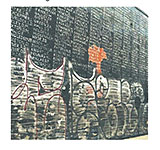

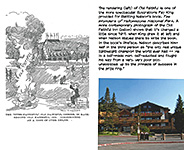
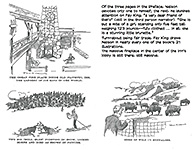
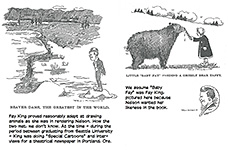

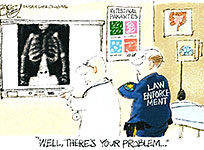
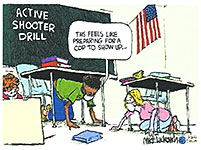
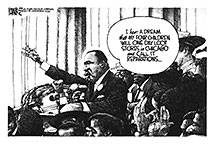
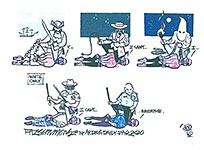

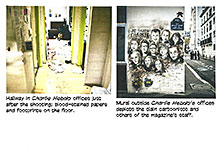

1.jpg)
2.jpg)
3.jpg)
4.jpg)
5.jpg)
1.jpg)
2.jpg)
3.jpg)
4.jpg)
5.jpg)
6.jpg)

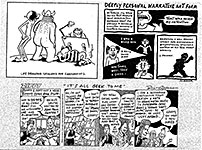
7.jpg)
8.jpg)
9.jpg)
10.jpg)
11.jpg)
12.jpg)
13.jpg)
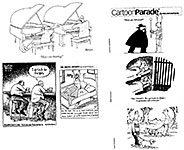
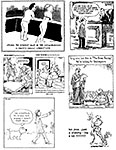
14.jpg)
15.jpg)
16.jpg)
17.jpg)
18.jpg)
19.jpg)
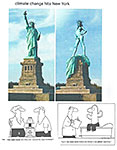
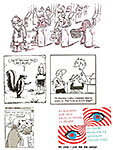
20.jpg)
21.jpg)
22.jpg)
23.jpg)
24.jpg)
25.jpg)
26.jpg)
